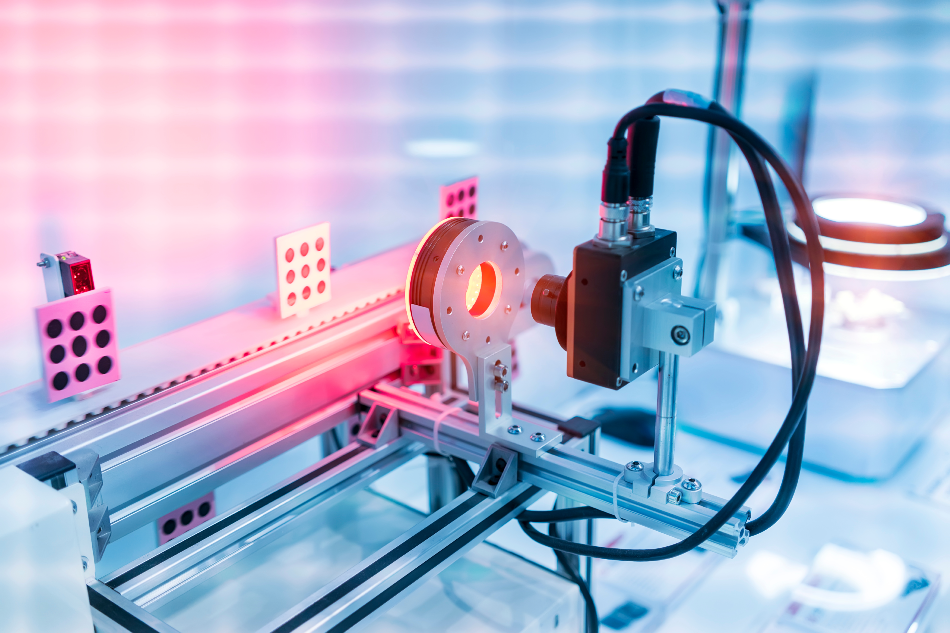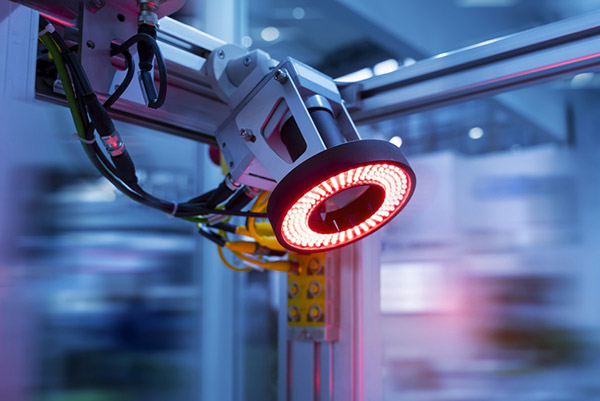10 industry applications of optical fibre diameter analyser that might surprise you
Understanding Robotic Vision: Why It Is Crucial for Modern Automation Processes
Robotic vision represents a substantial advancement in automation modern technology. It permits machines to assess aesthetic information, enhancing their capacity to carry out tasks with accuracy. This capacity is transforming markets by improving effectiveness and reducing human mistake. The combination of robotic vision likewise poses obstacles. Comprehending its ramifications is necessary for organizations aiming to stay competitive. What factors affect its fostering, and just how can firms take advantage of this technology successfully?
The Basics of Robotic Vision Technology
Robotic vision modern technology works as the foundation of automation in numerous markets, allowing devices to regard and analyze their environments. This technology incorporates innovative imaging systems, such as electronic cameras and sensors, with innovative formulas that process visual data. By capturing pictures and assessing them in real-time, robotic vision allows machines to identify things, analyze their placements, and make informed choices based upon visual input.Key elements of robotic vision consist of photo processing methods, maker discovering models, and deepness understanding systems, which work jointly to enhance a robotic's understanding of its environment. Calibration and ecological flexibility are likewise vital, making certain that systems can operate effectively under diverse conditions. This fundamental modern technology not only improves functional efficiency yet also enhances safety and security by allowing robotics to browse complicated environments while reducing errors and accidents. As industries remain to develop, the significance of durable robotic vision modern technology remains critical in driving development and efficiency.
Trick Applications of Robotic Vision in Sector
The application of robotic vision technology spans a vast array of markets, significantly enhancing functional capacities and effectiveness. In manufacturing, robotic vision systems make it possible for specific assessment and top quality control, guaranteeing products satisfy rigid requirements. In the automotive field, these systems aid in jobs such as component setting up and defect discovery, enhancing manufacturing lines.In logistics, robotic vision plays a vital duty in automated material handling, enabling robotics to browse intricate environments and accurately identify products for arranging and loading. The food market makes use of robotic vision for arranging and packaging, making sure consistency and compliance with wellness regulations.Additionally, in healthcare, robotic vision help in medical treatments and diagnostics, offering boosted accuracy and minimizing threats. In general, the diverse applications of robot vision innovation add to increased efficiency and technology across multiple markets, demonstrating its importance in modern commercial processes.
Benefits of Carrying Out Robotic Vision Solutions
Implementing robotic vision systems offers numerous benefits that substantially enhance operational efficiency and accuracy throughout different industries. These systems enable machines to perceive and translate their surroundings, causing boosted decision-making processes. Boosted accuracy in jobs such as top quality control and arranging minimizes human error, guaranteeing regular product standards.Moreover, robotic vision systems can run constantly, boosting efficiency while lowering labor expenses. They can doing detailed jobs at broadband, enabling faster production cycles. The integration of innovative imaging modern technologies facilitates real-time information collection, equipping firms to evaluate efficiency metrics and streamline operations.Additionally, the versatility of robotic vision systems allows them to be used in varied applications, from automobile setting up lines to food packaging. By providing dependable and exact automation services, these systems help organizations preserve an affordable edge in a significantly automated industry, highlighting their crucial duty in modern manufacturing atmospheres.
Difficulties and Limitations of Robotic Vision
While robot vision systems supply considerable benefits, they also deal with a number of difficulties and restrictions that can impede their effectiveness. One key difficulty is the irregularity in illumination conditions, which can substantially affect photo high quality and result in misconception of visual information. Additionally, the intricacy of real-world environments, filled up with vibrant items and differing textures, poses troubles in item acknowledgment and tracking.Another limitation is the reliance on top notch sensing units and progressed formulas, which can be costly and need comprehensive calibration. Robotic vision systems might have a hard time useful reference with deepness understanding and three-dimensional understanding, particularly in chaotic settings.Finally, the combination of robot vision with existing automation systems can be intricate, needing comprehensive training and programs. These difficulties underscore the relevance of recurring r & d to improve the abilities and dependability of robotic vision innovations in numerous applications
The Future of Robotic Vision in Automation
The future of robot vision in automation assures considerable improvements in enhanced object recognition and boosted navigation systems. As innovation advances, these technologies will certainly make it possible for robots to connect extra successfully with their settings and carry out complex tasks with higher precision. This progression is anticipated to redefine functional abilities throughout different sectors.
Enhanced Object Recognition


Boosted things recognition stands at the center of improvements in robotic vision, transforming just how automation systems perceive and engage with their environments. This innovation allows robots to determine and classify a vast variety of objects with impressive accuracy, helping with extra effective operations across different sectors. Utilizing deep learning algorithms and advanced imaging methods, systems can acknowledge products in vibrant settings, adapting to changes in lighting, angles, and occlusions. As an outcome, enhanced item acknowledgment not only improves procedures such as sorting, picking, and top quality control however also minimizes mistakes and increases productivity. The constant development in this area promises to even more incorporate robotics right into day-to-day tasks, significantly boosting operational performance and paving the way for smarter automation options.
Enhanced Navigating Systems
Advancements in navigating systems are positioned to revolutionize robot vision in automation, allowing robots to traverse complex settings with unmatched accuracy. By integrating sophisticated sensors, expert system, and artificial intelligence algorithms, these systems facilitate real-time mapping and localization. This allows robots to adapt to dynamic environments, preventing obstacles and optimizing routes successfully. Improved navigation capabilities encourage robots to execute jobs in numerous setups, from warehouses to health care centers, improving performance and security. Furthermore, the constant evolution of these technologies assures to minimize functional expenses by minimizing mistakes and downtime. As the demand for automation boosts, enhanced navigation systems will certainly play an essential role fit the future of robot vision, making sure smooth combination into daily operations.
Incorporating Robotic Vision With Various Other Technologies
Integrating robot vision with various other modern technologies substantially improves automation capacities across different industries. By integrating advanced imaging systems with expert system, artificial intelligence, and Internet of Points (IoT) connectivity, companies can achieve unmatched effectiveness and precision in their procedures. For circumstances, robotic vision can be used along with maker learning formulas to improve item acknowledgment and decision-making procedures, enabling robots to adjust to vibrant environments.Additionally, when integrated Recommended Site with IoT tools, robotic vision systems can assist in real-time information evaluation and responses loopholes, optimizing workflows and go right here decreasing downtime. This synergy enables exact quality control and predictive upkeep, eventually reducing functional costs. Furthermore, combination with joint robots (cobots) improves human-robot interaction, making automation much safer and much more efficient in environments where human oversight is essential. Consequently, the convergence of robot vision with corresponding innovations is crucial for driving innovation and performance in modern-day automation processes.
Frequently Asked Concerns
Just How Does Robotic Vision Differ From Human Vision?

What Kinds of Cameras Are Used in Robotic Vision?
Different kinds of cams are made use of in robot vision, including CCD, CMOS, and depth electronic cameras. optical fibre diameter analyser. These cameras make it possible for robots to view their setting, helping with tasks such as item acknowledgment, navigation, and high quality examination in automated systems
Can Robotic Vision Equipments Pick Up From Experience?
Robotic vision systems can indeed gain from experience. Through sophisticated formulas and artificial intelligence methods, they adjust and boost their aesthetic acknowledgment capacities, boosting their performance in various jobs with time as they process new information.
Just How Do Lights Issues Impact Robotic Vision Efficiency?
Illumination conditions significantly impact robot vision efficiency by affecting picture comparison, shade accuracy, and things detection abilities. Insufficient or excessive light can lead to misconception of visual information, influencing the general efficiency of robot systems.
Exist Safety Interest In Making Use Of Robotic Vision?
Safety and security worry about robotic vision consist of possible false impressions of environments, bring about mishaps. Poor sensor calibration or ecological changes can worsen these threats, requiring rigorous screening and adherence to safety and security criteria for effective implementation.